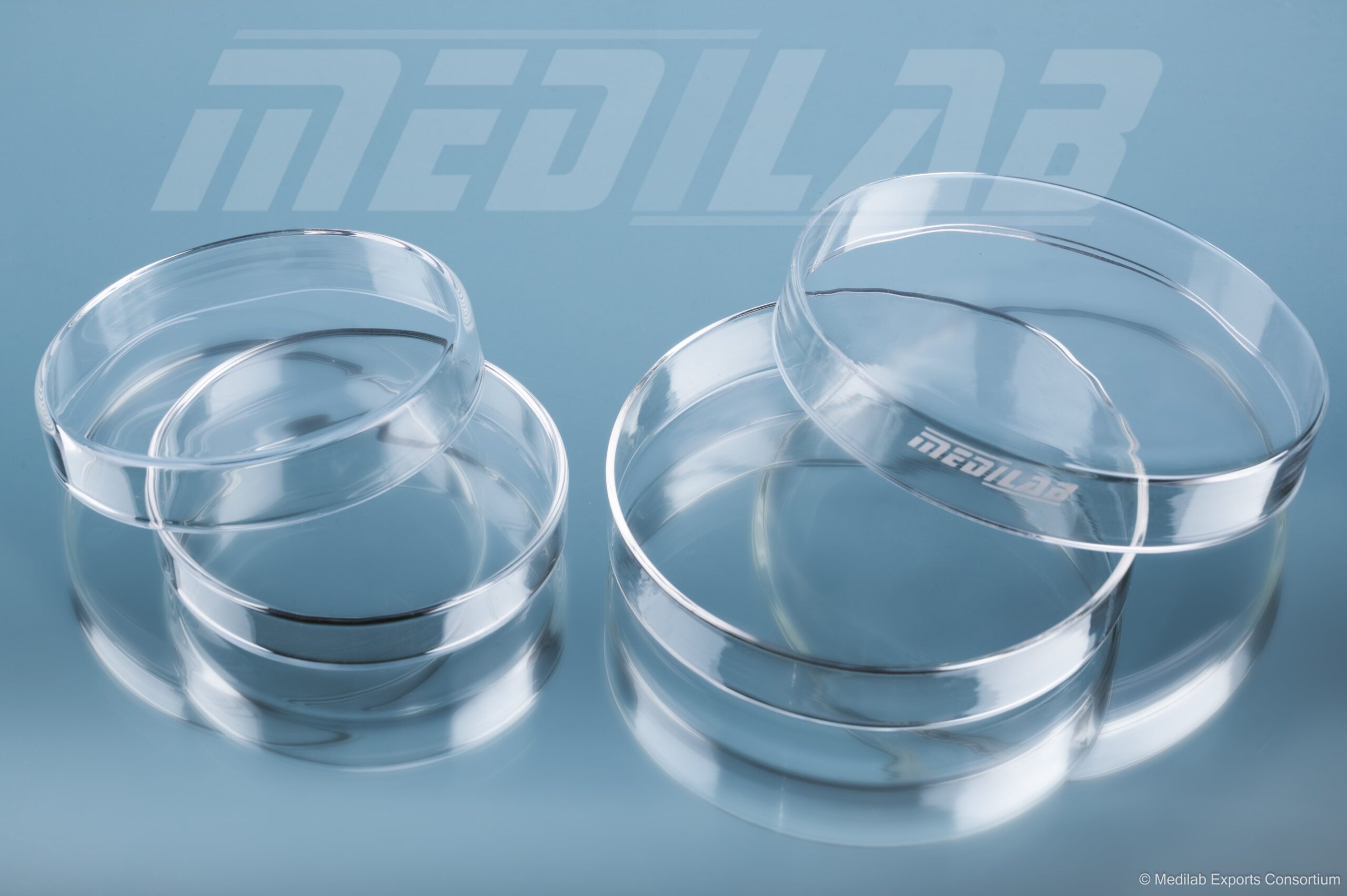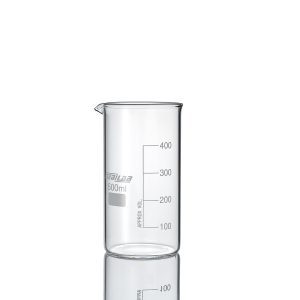Description
| Catalog No. | OD x Height mm. |
| 11021/1 | 50 x 17 |
| 11021/2 | 80 x 17 |
| 11021/2.1 | 90 x 17 |
| 11021/3 | 100 x 17 |
| 11021/4 | 150 x 20 |
MEDILAB Petri Dishes are high-quality, reusable culture dishes made from Borosilicate Glass 3.3, engineered for precise microbiological, analytical, and research applications. They provide a sterile, stable, and chemically inert surface for growing, observing, and analysing microorganisms, tissue cultures, and small-scale biological samples. Their durability and clarity make them essential tools for research laboratories, pharmaceutical testing, industrial QC/QA environments, and academic institutions.
Key Features
- High-clarity borosilicate glass ensures excellent visibility for colony observation and documentation.
- Thermally stable construction suitable for autoclaving, dry heat sterilisation, and repeated laboratory use.
- Chemically inert and contamination-resistant, making it ideal for sensitive microbial work.
- Uniform wall thickness for consistent performance, temperature resistance, and mechanical strength.
- Reusable and eco-friendly, reducing disposable plastic waste.
- Smooth surface finish allows even distribution of culture media.
- Stackable design for easy storage and incubation handling.
- Flat-lid / grip-lid options (based on customer requirement) for controlled gas exchange.
Material Specifications
- Material: Borosilicate Glass 3.3
- Properties: Exceptional thermal resistance (ΔT ~165°C), High chemical durability against acids, alkalis, solvents, and culture media, Low thermal expansion coefficient (3.3 × 10⁻⁶ /K), High mechanical strength and scratch resistance
- Standards Compliance: Manufactured as per ISO 3585 – Borosilicate Glass 3.3 Standard. Follows ISO / DIN dimensional and quality guidelines for microbiology labware
Technical Specifications
- Dimensions: Standard height: 12 to 20 mm, depending on design. Lid and base tolerance controlled for optimal air exchange
- Accuracy / Tolerance: Precision-moulded under strict quality parameters with ±5% dimensional tolerance
- Sterilisation Compatibility: Autoclavable at 121°C for 15–20 minutes, Resistant to dry heat up to 180°C
- Accessories (Optional): Culture media preparation plates, marking pens Glass lids with ventilation slots
Handling & Precautions
- Before Use: Ensure petri dishes are properly cleaned and sterilised. Avoid sudden temperature changes to prevent thermal shock.
- During Use: Handle with gloves to maintain sterile conditions. Keep the lid slightly ajar during inoculation to minimise contamination. Do not expose to open flame directly.
- Cleaning & Sterilisation: Wash gently using mild detergents; avoid abrasive scrubbing. Rinse with distilled water for microbiological work. Autoclave at recommended temperature/time only.
- Best Practices: Store in a dry, dust-free environment. Inspect for cracks or chips before each use. Avoid stacking too high to prevent damage.
Applications
MEDILAB Petri Dishes are widely used across scientific, industrial, and educational environments, including:
- Microbiology & Pathology Labs: Culture growth, colony counting, microbial isolation.
- Pharmaceutical QC/QA: Stability studies, sterility testing, environmental monitoring.
- Biotechnology & Life Sciences: Tissue culture studies, inoculation tests, microbial assays.
- Chemical & Food Industries: Quality control testing, contamination analysis.
- Universities & Research Institutes: Practical training, research experiments, demonstration setups.
- Environmental Testing Labs: Water, soil, and surface microbial contamination studies.
Their consistent performance and high durability make them an indispensable part of the daily laboratory workflow.







